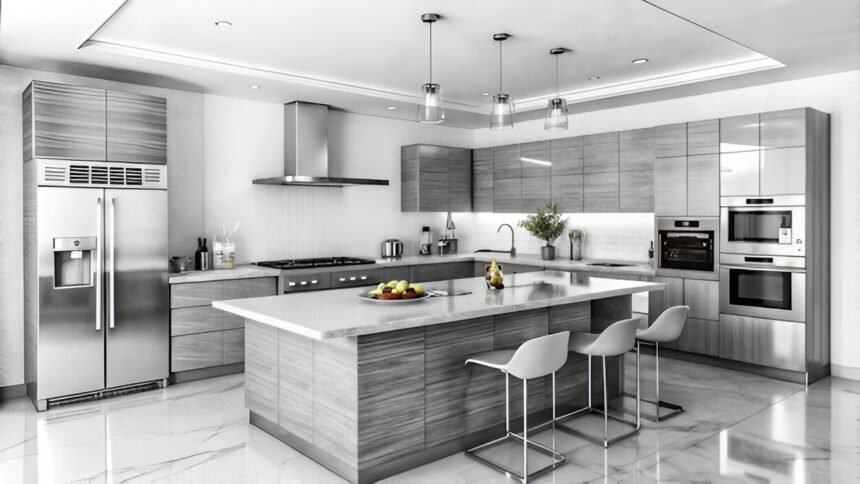The kitchen is often considered the heart of a home, where meals are prepared, conversations shared, and memories made. A well-designed kitchen not only enhances the functionality of the space but also adds to the aesthetic appeal of the entire home. From layout and storage solutions to materials and colors, every aspect of kitchen design plays a crucial role in creating a space that is both practical and visually appealing.
Importance of Kitchen Design
Kitchen design is more than just arranging cabinets and appliances in a functional layout. It involves understanding the needs and preferences of the homeowners and creating a space that reflects their lifestyle and personality. A well-designed kitchen can improve efficiency, streamline workflow, and create a welcoming atmosphere for family and guests.
Elements of Kitchen Design
1. Layout
The layout of a kitchen is the foundation of its design. Common layouts include the L-shaped, U-shaped, galley, and island kitchens. The layout should be tailored to the size and shape of the space, ensuring a smooth flow of movement between the cooking, preparation, and storage areas.
2. Storage
Ample storage is essential for keeping the kitchen organized and clutter-free. Incorporating a mix of cabinets, drawers, and shelves can help maximize storage space while keeping frequently used items easily accessible. Pull-out pantry shelves, corner cabinets, and overhead storage solutions are popular choices for efficient kitchen storage.
3. Appliances
Choosing the right appliances is key to a functional kitchen. From energy-efficient refrigerators and cooktops to smart ovens and dishwashers, modern appliances offer a wide range of features to suit different cooking styles and preferences. Integrating appliances seamlessly into the kitchen design can enhance both aesthetics and functionality.
4. Materials
Selecting high-quality materials is crucial for a durable and visually appealing kitchen. Countertops, backsplashes, flooring, and cabinetry materials should be chosen based on factors such as durability, maintenance requirements, and aesthetic appeal. Popular choices include granite, quartz, stainless steel, and wood for their durability and versatility.
5. Lighting
Proper lighting can transform the look and feel of a kitchen. A combination of task lighting, ambient lighting, and accent lighting can brighten up the space, improve visibility, and create a cozy ambiance. Pendant lights, under-cabinet lighting, and recessed lights are common lighting options in kitchen design.
Trends in Kitchen Design
1. Open Shelving
Open shelving has gained popularity in modern kitchen design for its sleek and minimalist look. It allows homeowners to showcase their favorite dishes and accessories while adding a touch of openness to the space. Open shelving can be combined with closed cabinets for a balanced storage solution.
2. Neutral Color Palettes
Neutral color palettes such as white, gray, and beige continue to dominate kitchen design trends. These timeless colors create a sense of calm and spaciousness, making the kitchen feel bright and inviting. Accents of bold colors through backsplashes, accessories, or appliances can add a pop of personality to the space.
3. Smart Technology
Smart technology is revolutionizing kitchen design with features such as touchless faucets, smart appliances, and integrated home automation systems. These technologies not only enhance convenience and efficiency but also add a modern touch to the kitchen. Voice-controlled assistants and smart lighting systems are becoming increasingly popular in smart kitchens.
Conclusion
Kitchen design is a harmonious blend of aesthetics and functionality, where every detail contributes to creating a space that is both beautiful and practical. By understanding the key elements of kitchen design, staying updated on the latest trends, and incorporating personal preferences, homeowners can create a kitchen that is tailored to their unique needs and style. Whether it’s a cozy family kitchen or a sleek modern space, the art and science of kitchen design offer endless possibilities for creating a space that is truly the heart of the home.





